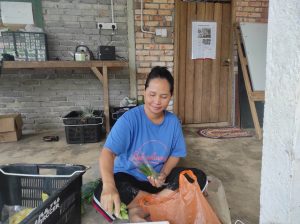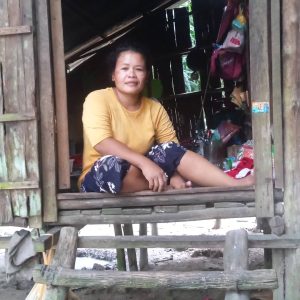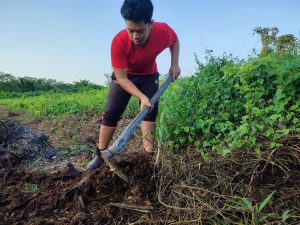Orang Asli, the indigenous people of Malaysia, has long been shrouded in mystery due to their unique cultural practices and traditional way of life. This mystery has often given rise to misconceptions and assumptions about the Orang Asli, with many Malaysians having little understanding or appreciation of their diverse cultural heritage and the challenges they face in modern society.
To shed light on the Orang Asli’s way of life and culture, here are 7 things that Orang Asli from Pahang would like Malaysians to know.
#1: Completing Primary School Is Compulsory But Secondary Education Is A Privilege
For Linggi, 68, completing Primary 6 should be sufficient for OA children, he says. In fact, the Ministry of Education (MOE) reported that 42.29% of OA students did not complete their schooling up to Form Five.
Some of the reasons as shared by the Melai veteran are the hidden costs of secondary education such as transportation which can be quite burdensome for parents.
Most parents do not have enough money to send their children to secondary school. In addition, the distance to travel from our village to the secondary school is quite far. – Linggi, 68
Linggi acknowledges, however, that the educational pathway for the younger generation of OAs has improved. His pride comes from seeing more of them complete secondary education and some even tertiary education.
#2: Neither Rich Nor Poor In Forest Assets
A finding from the Centre for Orang Asli Concerns (COAC) showed that 99.29% (54,600) of the Peninsular Orang Asli population were in the B40 income bracket earning less than RM4,000 a month.
Suhana, 34, agreed that OA communities aren’t cash-rich.
If we want to buy something expensive, we would have to save money to be able to buy it. – Suhana, 34

The village of Melai has been blessed with a stretch of land and forest reserves. However, Suhana believes that the land should be used with care especially as the forest cover has reduced over the years.
In terms of land and forest resources, we aren’t that rich. We have to make sure land isn’t used excessively and our forest area has only dwindled and isn’t as lush as before. – Suhana, 34

#3: OA Are Still Living Without Basic Necessities
Of course, Orang Asli lived without electricity in the past. Everyone else has progressed to become a modern society, and we want to be just as advanced.– Nor Shima, 26
In Melai, 31 OA families do not have access to a reliable electricity supply and clean piped water. In 2022, 41.4% of OA settlements were classified as backward and 52.6% were moderately developed.

Nor Shima, 26, hopes that there will be a light at the end of the tunnel. Like many other modern societies, she hopes that Melai will be equipped with basic infrastructure.
#4: OA Women Are Equally Involved Economic Activities
It is easy to assume that OA women are primarily housewives who tend to their families. However, Salina, 35, disagrees, as the majority of women in Melai work alongside their husbands to improve their livelihoods.
Women toil in the field and work on their farms, harvesting fruits and vegetables for their families and then selling the veggies for income.
It would not be enough if we relied solely on our husbands to work alone. It is possible to earn more income for our families if we put in more effort. – Salina, 35
#5: The Best Medicines For OAs Are Found In The Forest
The first line of medical aid used by the OA community is medicinal herbs harvested from the forests. Tina, 44, shared that the herbs are effective in treating common ailments such as fever, cough, colds and healing wounds.

Beyond the common ailments, villagers would go to nearby clinics to seek medical help. Currently, the travelling time to the nearest government clinic in Tasik Chini is 20 minutes on a motorcycle.
We usually use forest herbs to treat mild pains like coughs, colds, fevers and wounds. We would only visit the doctors at the clinic for more serious ailments. – Tina, 44
#6: Not All Continue Practising Their Ancestral Faith
Traditionally, most indigenous communities were believed to practise animism or the belief that objects, places and creatures have supernatural powers.
Data previously found that 70% of indigenous communities continue with their ancestral faith. The remaining 30% have turned to other religions such as Christianity and Islam.
In Melai however, Abas, 60, said that the community do not have any religious beliefs, but that they do rely on God for guidance.
OA has no religious beliefs and has never worshipped nature such as trees or mounds. If you want to ask for something, the only place to ask for it is from God.– Abas, 66
#7: The Aspirations Of OA Differ From That Of Urbanites
Most of us dream of landing our dream job or owning our dream home. However, the dreams of OA are simpler. Indera, 26, shared that she wasn’t interested in finding a job or moving to the city. To her, the forest and its secrets are enough.
I would prefer exploring the forest because it is familiar to me. I also love being surrounded by nature. – Indera, 26
OA individuals do have their own ambitions and aspire to a better life. To Rohani, 55, the dreams harboured by the OA community are different from the dreams of city dwellers.
We have ambitions but they aren’t the same as many city folks. Our ambition is to live and have enough to eat – that’s it. -Rohani, 55,
SOURCES:
- Bernama. (2022). Orang Asli: Poverty forcing children out of school. New Straits Times. Link
- A. Lai. (2019). Poverty: More than meets the eye. The Star. Link
- Minority Rights. (n.d.) Malaysia – Orang Asli. Link


